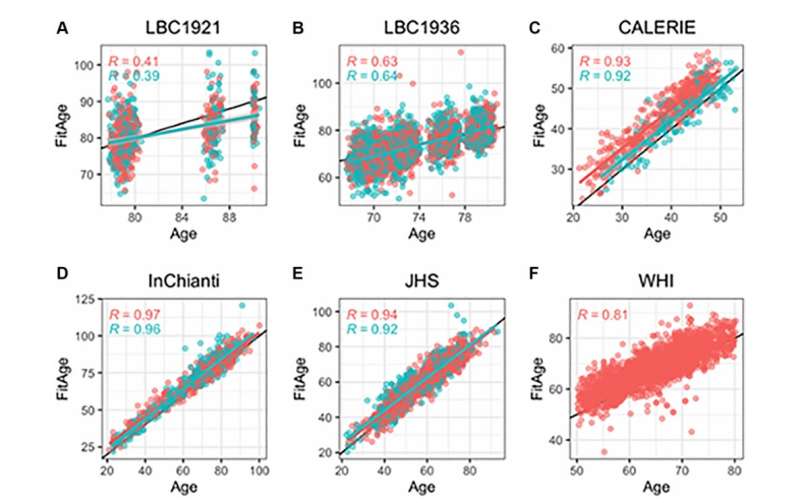This article has been reviewed according to Science X's editorial process and policies. Editors have highlighted the following attributes while ensuring the content's credibility:
fact-checked
proofread
DNAmFitAge: Biological age indicator incorporating physical fitness

A new research paper titled "DNAmFitAge: biological age indicator incorporating physical fitness" has been published in Aging.
Physical fitness is a well-known correlate of health and the aging process, and DNA methylation (DNAm) data can capture aging via epigenetic clocks. However, current epigenetic clocks do not yet use measures of mobility, strength, lung, or endurance fitness in their construction.
In this new study, researchers developed blood-based DNAm biomarkers for fitness parameters including gait speed (walking speed), maximum handgrip strength, forced expiratory volume in one second (FEV1), and maximal oxygen uptake (VO2max), which have modest correlation with fitness parameters in five large-scale validation datasets (average r between 0.16–0.48).
"These parameters were chosen because handgrip strength and VO2max provide insight into the two main categories of fitness: strength and endurance; and gait speed and FEV1 provide insight into fitness-related organ function: mobility and lung function," the researchers write.
The researchers then used these DNAm fitness parameter biomarkers with DNAmGrimAge, a DNAm mortality risk estimate, to construct DNAmFitAge, a new biological age indicator that incorporates physical fitness. DNAmFitAge was associated with low-intermediate physical activity levels across validation datasets (p = 6.4E-13), and younger/fitter DNAmFitAge corresponds to stronger DNAm fitness parameters in both males and females.
DNAmFitAge was lower (p = 0.046) and DNAmVO2max is higher (p = 0.023) in male body builders compared to controls. Physically fit people had a younger DNAmFitAge and experienced better age-related outcomes: lower mortality risk (p = 7.2E-51), coronary heart disease risk (p = 2.6E-8), and increased disease-free status (p = 1.1E-7). These new DNAm biomarkers provide researchers a new method to incorporate physical fitness into epigenetic clocks.
The researchers conclude, "Our newly constructed DNAm biomarkers and DNAmFitAge provide researchers and physicians a new method to incorporate physical fitness into epigenetic clocks and emphasizes the effect lifestyle has on the aging methylome."
More information: Kristen M. McGreevy et al, DNAmFitAge: biological age indicator incorporating physical fitness, Aging (2023). DOI: 10.18632/aging.204538




















